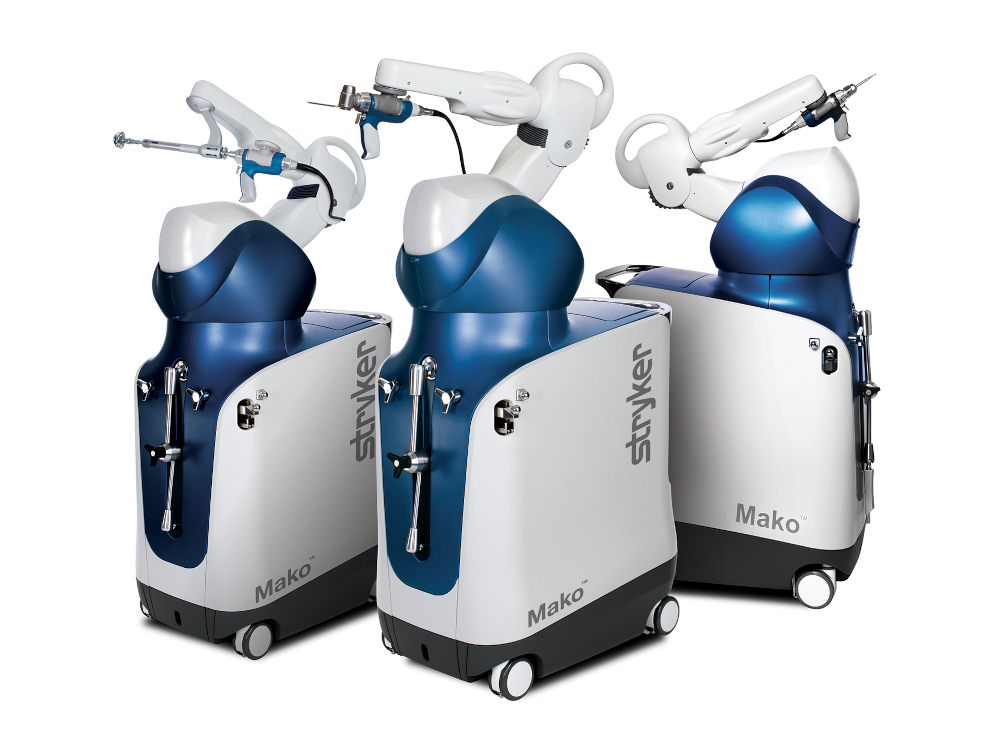MAKO Robot by Stryker Orthopaedics
The Mako robotic assisted joint replacement is the latest development in hip and knee replacement surgery. For 60 years hip and knee replacement have been the mainstay of treating osteoarthritis. They provide excellent pain relief and a return to high levels of activity.
In order for a joint replacement to function properly, and last for many years, it must be put in correctly. In the past surgeons have relied on their skill and training to implant a hip or knee replacement as accurately as possible. However, in modern times, it has become clear that robots can perform certain tasks even more accurately than humans. This has led to the development of robotic assisted hip and knee replacements.
The robot does not perform the surgery but it helps to guide the surgeon’s hand when cutting the bone or implanting the joint replacement. It also stops the surgeon cutting critical structures around the joint by accident.

The second stage is to “register” the patient’s actual anatomy into the robot. This is done once the patient is anaesthetised and involves pressing a probe onto the bone around the hip or knee that the robot can “see” with its camera. Once this information is collected the joint replacement itself can begin. Initially the surgery is carried out as normal but when bone needs to be cut or an implant inserted the MAKO robot assistant comes into play.
The surgeon always holds the instruments but a robotic arm also guides the surgeon into the optimal position according to the CT scan. It is a bit like having X-ray vision and means the joint replacement is inserted as accurately as possible.
The MAKO robotic assisted joint replacement combines the skill and experience of a surgeon with the accuracy of an X-ray guided robot. It is the future of joint replacement surgery.